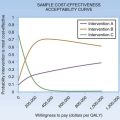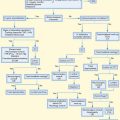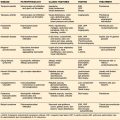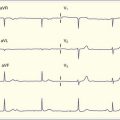212 Medical-Legal Issues in Emergency Medicine
For a more in-depth version of this chapter, see www.expertconsult.com
Establishing a Trusting and Positive physician-Patient Relationship
Be Service Oriented
The key is to understand that as an emergency physician (EP), when you arrive at work, you check all your prejudices at the door. Remember that you may never be able to solve a patient’s chronic medical problem, but showing genuine concern and providing a positive patient experience will go a long way toward relieving the patient’s fears. Box 212.1 is a list of simple rules that should help facilitate the doctor-patient interaction.
Box 212.1 Rules for Physician-Patient Interactions
It does not matter how long they waited; it was too long. Never argue with patients over the amount of time that they waited.
Never use excuses, such as you are working short staffed or “I’ve been here all day.”
Apologize for the wait. As soon as you have apologized for the wait, you have at least acknowledged that the patient’s time is as valuable as yours and you understand that waiting is not a comfortable situation.
Thank the patient the family for coming in.
Trivialization of minor complaints can lead to a dissatisfied patient. Most patients believe that they have a legitimate reason to be in the emergency department. To be informed that it is the doctor’s perception that theirs is not an emergency never helps the doctor-patient interaction and does not prevent further emergency department visits.
Charting and the Medical Record
Multiple issues with regard to a chart accompany every lawsuit. Box 212.2 is a list of simple rules that should help facilitate the key points for a sound medical chart.
Discharge Instructions
Approximately half the lawsuits in emergency medicine revolve around discharge instructions and the discharge program given to patients. Box 212.3 gives a few paramount rules for discharge instructions.
Box 212.3 Rules for Discharge Instructions
All instructions should be time specific.
Instructions should be action specific.
Understanding the Medical-Legal System
Information on this topic can be found online at www.expertconsult.com
Concerns Specific to the Current-Day Emergency Department
Combative Patients
The ED has the duty to restrain patients when they constitute a danger to self or others by virtue of a physical or mental condition (Box 212.4). Determination of mental and physical capacity is the key issue. Patients who lack capacity will depend on the substitute judgment of the EP. Belligerent patients who have capacity require law enforcement to handle the situation.
Box 212.4 Rules for Restraining Combative Patients
Restraint methods should be appropriate.
The need for restraints must be documented.
All restrained patients require reevaluation.
Emergency physicians rarely become involved legally in restraint cases.
Civil Commitment
• Most states require a second certification process to be done in a specified time frame by a mental health professional.
• Ruling out organic causes of disease is necessary.
• The primary goal of the initial evaluation is to arrange for the patient to be reevaluated by mental health professionals.
Transfers
The Emergency Medical Treatment and Active Labor Act (EMTALA) is the rule by which a patient can legally be transferred or discharged out of the ED to another facility. Box 212.5 contains a set of guidelines for complying with the EMTALA.
Box 212.5 Key Points of the Emergency Medical Treatment and Active Labor Act
Informed refusal can allow a patient to exempt himself or herself from EMTALA regulations. The emergency physician and the nurse involved in the case should carefully note this on the patient’s chart.
The patient should be stabilized such that the acts of transfer and moving the patient to a higher level of care have a reasonable probability of providing a better outcome for the patient.
A hospital that usually and customarily receives patients should accept these patients unless their capabilities, at that time, are overwhelmed and they are unable to find room. This fact should be noted on the records when trying to procure transfer of a patient.
Failure to comply can lead to hefty fines to the institution and physician.
Patients Who Leave before Examination or Against Medical Advice or Who Elope
The last health care professional to see the patient should write a note about why the patient left and attest that the patient had the mental capacity to make such a decision at that time (Box 212.6).
Box 212.6 Against Medical Advice
– Document the mental capacity of the patient.
– Provide the patient a diagnosis or potential diagnosis in a form that the patient can understand.
– Explain the risk and benefits of what can happen if the patient does not take the advice of health care workers.
– While being compliant with the Health Insurance Portability and Accountability Act, communicate with family or friends who are with the patient so that they may also be involved in persuading the patient to receive medical care.
• Have a witness, such as a nurse or family member, sign the document.
Health Insurance Portability and Accountability Act
The doctor-patient relationship and patient records are protected by federal law under the Health Insurance Portability and Accountability Act (HIPAA). Protection and release of this information are mandated by the HIPAA. Please refer to Chapter 211 for a more in-depth discussion.
Specific High-Risk Medical Complaints
Orthopedics
It is always wise for the EP to let patients know that this is the beginning of a process. Orthopedic management includes recognition, reduction, retention, and rehabilitation (Box 212.7). The ED is only the first part of what may be a long and complex process.
Box 212.7 Orthopedic Conditions
If you think enough of an injury to have it radiographed, you should think enough of it to splint it.
One radiograph does not rule out a fracture. The emergency physician should never guarantee that something is not broken.
Calcaneal fracture: Examination of the lumbar spine is indicated.
Spinal fractures in children: The thought process must include the possibility of child abuse.
Traumatic femoral fracture: Other chest, abdominal, and cervical spine injuries must be considered.
Eye, Ear, Nose, and Throat or Airway
Airway, in emergency medicine, is everything. Cases involving the airway are major problems because of the serious neurologic injuries that can result (Box 212.8).
Box 212.8 Eye, Ear, Nose, and Throat Rules
Proper use of a laryngeal mask airway or bag-valve-mask apparatus can frequently control and provide adequate ventilation for patients.
Eye foreign body sensation: Make sure that there is no organic cause of the injury, no retained foreign body, and no contact lens use. Prescribe tetanus toxoid, antibiotics, and close ophthalmology follow-up.
Nasal septal hematoma: Document the presence or absence of a septal hematoma.
Ear cartilage injury: Prescribe antibiotics and timely referral to otolaryngology.
Wounds
All wounds seen in the ED are potentially contaminated and have foreign material almost by definition (Box 212.9). Lawsuits in emergency medicine wound management are based on three critical issues: foreign body, nerve injury, and tendon injury.
Box 212.9 Rules for Wound Care
Never guarantee that no foreign bodies are left in a wound.
Glass does show on radiographs. Liberal use of radiography in shattered glass–type wounds is advisable.
A laceration chart that does not comment on foreign body, nerve, and tendon assessment is probably inadequate.
Tendon injuries: Deep wounds should be observed through a range of motion to make certain that the tendon injury is not hidden by soft tissue. Repair of tendons is rarely an emergency procedure. These wounds can be properly irrigated and closed loosely, and tendon repair can be performed later, within a reasonable period.
Nerve injuries: Proper documentation of nerve function and follow-up in a timely manner are needed, but immediate intervention is rarely, if ever required.
Wound infections: Higher-pressure irrigation through a syringe is preferable.
Bite wounds: Immobilization, intravenous antibiotics, elevation, and follow-up in a timely manner is recommended.
Follow-up and suture removal. Arranging for follow-up and suture removal is important. Having the wound rechecked in 48 hours and arranging for proper interventions will essentially go a long way in preventing any legal actions concerning wound infections or retained foreign bodies.
Psychiatry
In emergency medicine, the major issue with psychiatry is that the physician must be able to delineate organic disease manifested as abnormal behavior (Box 212.10).
Box 212.10 General Considerations for Psychiatric Patients
The emergency physician (EP) is ultimately responsible for the patient regardless of the opinions of the consulting psychiatric worker.
The EP should adhere to guidelines of the Joint Commission on restraining and reevaluating patients.
The EP cannot say that a patient is free of organic disease, only that the patient is capable of being evaluated by a psychiatric service.
Abnormal vital signs should not be ascribed to psychiatric disease. Clues to organic disease include unexplained abnormal vital signs, tremors, and abnormal speech patterns.
Chest Pain
This condition is still the largest risk issue in emergency medicine. Between 20% and 25% of malpractice funds expended in emergency medicine are related to the complaint of chest pain. The groups of diseases that constitute most of these cases are acute coronary syndromes, aortic dissection, and pulmonary embolism (Box 212.11).
Box 212.11 Rules for Chest Pain
There is no single description of the pain that rules out a cardiopulmonary source of the complaint.
One electrocardiogram and one cardiac marker are not adequate to rule out acute coronary syndrome.
D-dimer is helpful only if negative in a low-risk patient.
Do not rationalize abnormal vital signs.
The emergency physician should not write prescriptions for nitroglycerin. Unstable chest pain is unstable angina until proved otherwise.
Response to a gastrointestinal cocktail proves nothing. It is in no way related to being able to separate myocardial from esophageal disease.
Abdominal Pain
Lawsuits related to abdominal pain in emergency medicine are highly age and sex dependent because of difficulties in diagnosis. Excellent evidence suggests that up to 50% of the time a patient with a complaint of abdominal pain leaves the ED without a specific diagnosis proved by testing. Short-term follow-up is the key because examination is merely a snapshot of a moving picture. If a patient’s examination shows peritonitis, remember that computed tomography has a 5% to 8% error rate for appendicitis. Clinical judgment should rule (Box 212.12).
Box 212.12 Rules for Abdominal Pain
If the patient still has an appendix, it could be appendicitis. The emergency physician should not avoid this discussion with the patient.
Repeated evaluations may be the safest and single best test for abdominal pain.
A few white blood cells or red cells in urine do not equal a urinary tract infection; there may be some other cause of the problem, such as an inflammatory process or aortic pathology.
In elderly patients with new-onset abdominal or flank pain, think aortic disease as an important rule-out diagnosis.
Back Pain
Evaluation of back pain is a daily occurrence in the ED. More than 6 million annual visits have been reported. The evaluation should be systematic and consider the red flags to warrant imaging for ruling out diagnoses with high morbidity and mortality, including ectopic pregnancy, abdominal aortic aneurysm, aortic dissection, spinal cord compression syndrome, and inflammatory conditions (Box 212.13).
Box 212.13 Rules for Back Pain Evaluation
If the patient is a childbearing female, pregnancy should be ruled out.
If the patient is older than 50 years, the differential diagnosis should include aneurysm and dissection.
If the patient is immunocompromised or an intravenous drug abuser or has a history of cancer, squamous cell cervical carcinoma and inflammatory pathology should be considered.
A directed neurologic examination should be performed and bowel and bladder dysfunction should be assessed.
Headache Emergencies
Headache is one of the most common chief complaints in emergency medicine (Box 212.14). The EP must consider the possibility of subarachnoid hemorrhage, meningitis, or carbon monoxide poisoning in every patient with headache.
Box 212.14 Rules for Headache Emergencies
If a computed tomography scan is obtained for subarachnoid hemorrhage, a spinal tap should be performed to confirm the negativity.
If this is a sudden onset of the worst headache in the patient’s life, it is prudent to rule out subarachnoid hemorrhage.
A sudden onset of neck pain can indicate a subarachnoid hemorrhage. One third of subarachnoid hemorrhages occur in the posterior fossa.
Patients with fever, photophobia, meningismus, and suspicion of meningitis should have antibiotics started promptly and then undergo a lumbar puncture when feasible.
Trauma
All EPs should know what they can and cannot do and should move quickly to ensure that the patient receives the actual help needed (Box 212.15). Administration of blood and treatment of shock are critical.
Box 212.15 Rules for Trauma Patients
A systematic approach involving the use of advanced trauma life support should be carried out.
The goal is to stabilize and transfer the patient to higher tertiary centers if definitive resources are not available.
Keep the patient immobilized until injury has been ruled out.
Head-injured patients should not be admitted merely for observation but should be sent to a center where intervention can take place if it is actually required.
Obstetric and Gynecologic Issues
With regard to obstetric and gynecologic issues, it is important for the EP to realize that there may be two patients and not one (Box 212.16).
Box 212.16 Rules for Obstetric and Gynecologic Issues
Missed ectopic pregnancies have decreased dramatically in the United States as a medical-legal problem since the widespread use of β-human chorionic gonadotropin testing and ultrasound scanning.
A negative ultrasound does not rule out an ectopic pregnancy.
Sudden loss of consciousness or shock in a young female patient should raise the possibility of a ruptured ectopic pregnancy until proved otherwise.
Eclampsia is the second most common obstetric and gynecologic emergency. It can be present up to 2 weeks postpartum.
In postpartum febrile female patients, ultrasound scans to check for retained products of conception and infection within the uterus are as important as checking the urine.
Women who are 5 months into gestation and have sustained trauma to the abdomen should undergo a period of fetal monitoring in the labor and delivery department.
Pediatrics
The number of pediatric medical-legal cases in emergency medicine has actually decreased as rates of immunization and the various diseases that can be immunized against have increased. The keys to pediatrics are examination and early reexamination. Child abuse is a serious social problem in EDs. In general, you should never accuse anyone of abusing his or her child. You merely state that an investigative process is required because of the findings. It is important to emphasize that “they” make us do this type of investigation in these situations. Abuse and neglect are often difficult to separate in the ED, and such distinction needs to be made through social services. When in doubt, however, the child’s safety is paramount, and admitting a child for observation can certainly be a reasonable use of the hospital facility. Certain specific disease entities, such as sudden infant death syndrome, unusual burns, vaginal infections, certain types of fracture, and repeated toxic ingestions, should always be considered suggestive of child abuse until further information is obtained (Box 212.17).
Fisher R, Ury W. Getting to YES. Negotiating agreement without giving in. New York: Penguin; 1991.
Henry G, Sullivan D. Emergency medicine risk management: a comprehensive review, 2nd ed. Dallas: American College of Emergency Physicians; 1997.
Mayer T, Cates R. Leadership for great customer service: satisfied patients, satisfied employees. Chicago: Health Administration Press; 2004.
Salluzzo R, Mayer T, et al. Emergency department management: principles and applications. St. Louis: Mosby, 1997.






